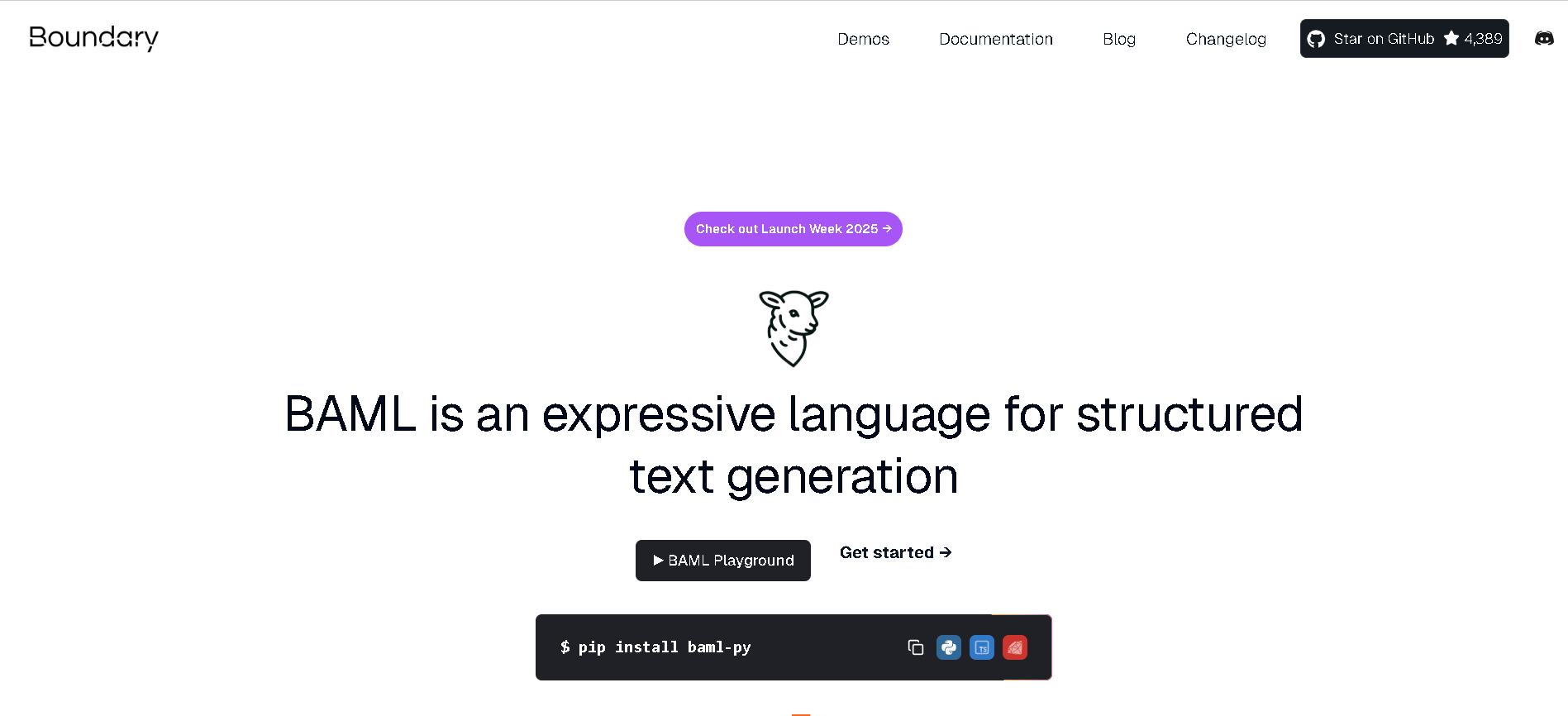
- Developers: Building applications that rely on structured data output from LLMs.
- Machine Learning Engineers: Integrating LLMs into workflows where reliable data formats are crucial.
- Data Scientists: Extracting specific, structured information from large volumes of text generated by LLMs.
- AI Researchers: Experimenting with and optimizing LLM interactions for structured output.
- Anyone working with LLMs: Who struggles with inconsistent or verbose LLM responses and needs clean, formatted data.
- Software Architects: Designing robust systems that leverage LLMs for data processing and automation.
How to Use BoundaryML.com?
- Installation: Begin by installing BAML into your Python environment using pip: `pip install baml-py`.
- Define Schema & Functions: Use BAML's expressive syntax to define the desired output schema (e.g., JSON structure) and functions for your LLM interactions. This transforms prompt engineering into a more structured coding approach.
- Integrate with LLMs: Connect BAML with your chosen LLM (e.g., GPT-3.5, GPT-4o). BAML's parser and function-calling capabilities work across various models.
- Develop in Playground: Utilize the BAML playground environment to develop, test, and refine your structured text generation workflows.
- Get Structured Output: Execute your BAML code. The parser ensures robust JSON error correction, handles "LLM yapping," and coerces output to your defined schema, providing reliable structured data.
- LLM-Specific Parser: Features a robust parser built from the ground up for LLMs, offering superior JSON error correction, immunity to irrelevant LLM chatter ("LLM yapping"), and automatic schema coercion.
- Universal Function-Calling: Enables reliable function-calling across virtually every LLM, providing consistent performance regardless of the underlying model.
- State-of-the-Art Performance: Achieves benchmark-setting results in function-calling, particularly noted for its efficiency and token reduction with models like GPT 3.5.
- Prompt Engineering as Code: Transforms the often-unpredictable art of prompt engineering into a structured, type-safe coding process with features like classifiers, multimodal inputs, and dynamic prompts.
- Static Analysis & Type-Safety: Provides static analysis and type-safety for LLM interactions, reducing errors and increasing reliability in development.
- Simplifies the complex task of getting structured data from LLMs.
- Robust parser with excellent JSON error correction and "anti-yapping" capabilities.
- Enables reliable function-calling across a wide range of LLM models.
- Transforms prompt engineering into a more reliable and systematic coding process.
- Achieves state-of-the-art results in LLM function-calling benchmarks.
- Offers features like static analysis and type-safety for increased development reliability.
- Supports multi-modal inputs, expanding LLM interaction possibilities.
- Includes a dedicated playground for easier development and testing.
- Helps in reducing token usage and improving efficiency for LLM interactions.
- Primarily a developer tool, not suitable for non-technical users seeking a no-code solution.
- Requires installation and familiarity with coding environments (e.g., Python).
- Learning curve associated with adopting a new language syntax (BAML).
- Currently focused on structured text generation; might not cover all LLM interaction needs.
- Specific performance gains or limitations for lesser-known LLMs are not explicitly detailed.
Starter
$ 0.00
VSCode playground testing, with multimodal capabilities
VSCode playground real-time prompt preview
Community support via Discord and Github
Enterprise
custom
Dedicated Slack channel
Architectural reviews with our experienced AI engineers
Prioritized feature requests
Access to Boundary Studio
Boundary Studio includes observability, data labeling, fine-tuning engineering support and more
Proud of the love you're getting? Show off your AI Toolbook reviews—then invite more fans to share the love and build your credibility.
Add an AI Toolbook badge to your site—an easy way to drive followers, showcase updates, and collect reviews. It's like a mini 24/7 billboard for your AI.
Reviews
Rating Distribution
Average score
Popular Mention
FAQs
Similar AI Tools
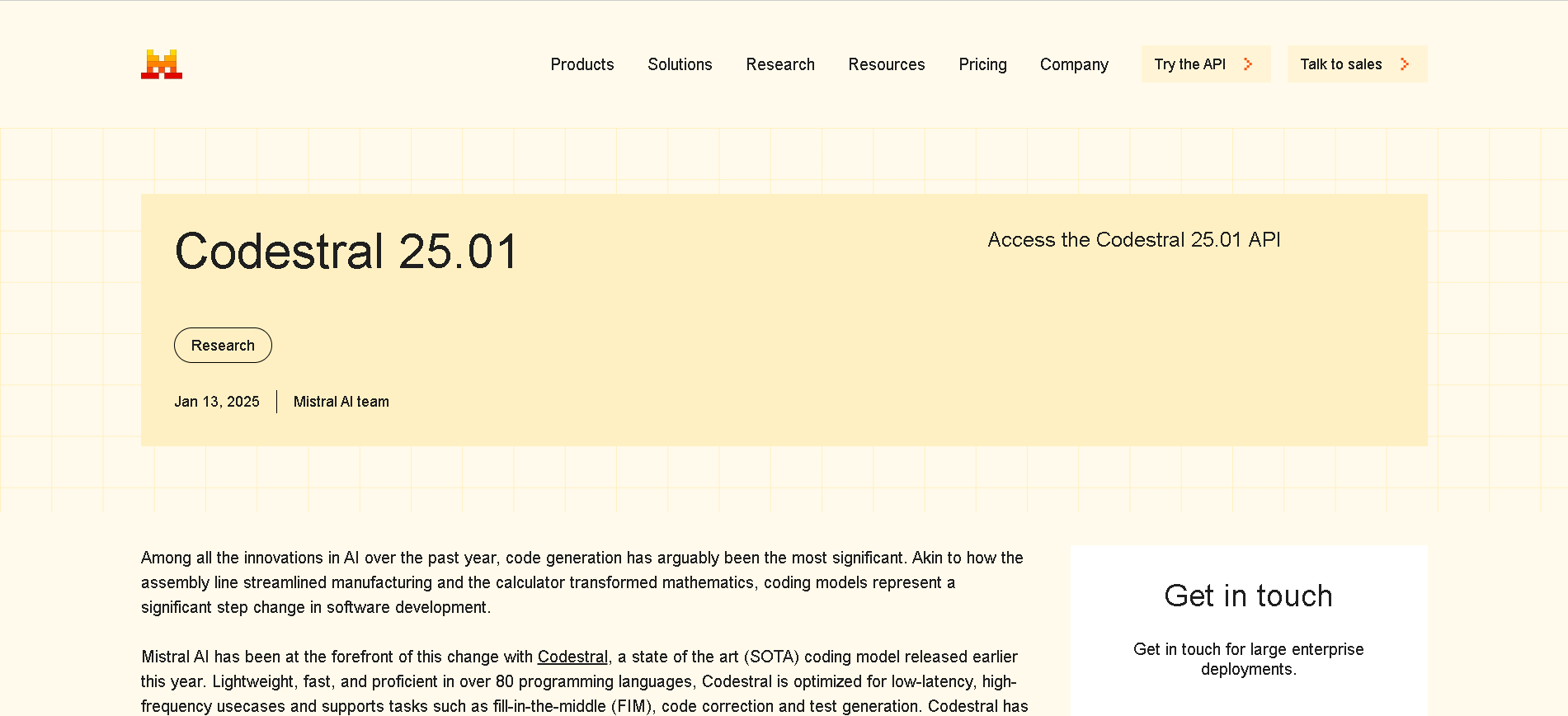
Codestral 25.01 is Mistral AI’s upgraded code-generation model, released January 13, 2025. Featuring a more efficient architecture and improved tokenizer, it delivers code completion and intelligence about 2× faster than its predecessor, with support for fill-in-the-middle (FIM), code correction, test generation, and proficiency in over 80 programming languages, all within a 256K-token context window.

Mistral Codestral ..
Codestral 25.01 is Mistral AI’s upgraded code-generation model, released January 13, 2025. Featuring a more efficient architecture and improved tokenizer, it delivers code completion and intelligence about 2× faster than its predecessor, with support for fill-in-the-middle (FIM), code correction, test generation, and proficiency in over 80 programming languages, all within a 256K-token context window.

Mistral Codestral ..
Codestral 25.01 is Mistral AI’s upgraded code-generation model, released January 13, 2025. Featuring a more efficient architecture and improved tokenizer, it delivers code completion and intelligence about 2× faster than its predecessor, with support for fill-in-the-middle (FIM), code correction, test generation, and proficiency in over 80 programming languages, all within a 256K-token context window.
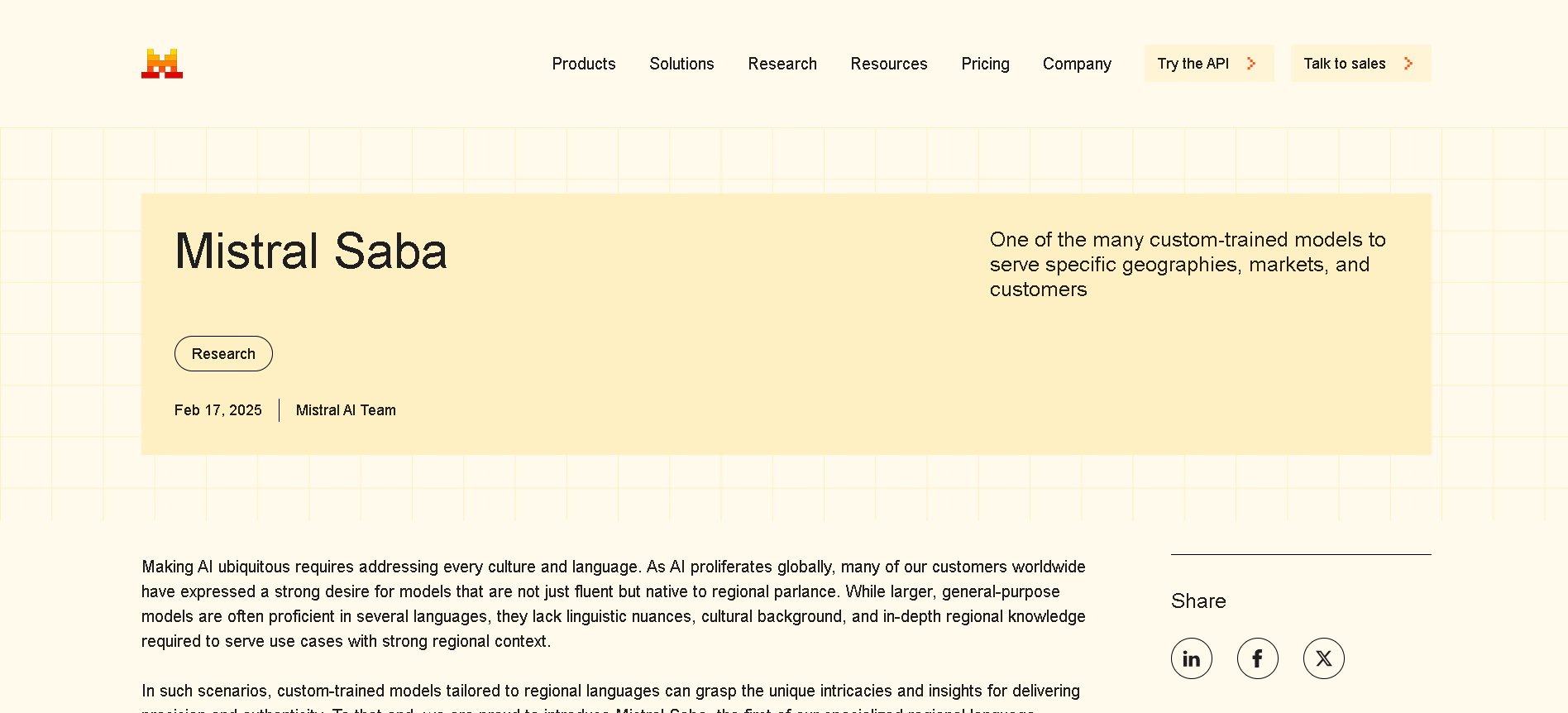
Mistral Saba
Mistral Saba is a 24 billion‑parameter regional language model launched by Mistral AI on February 17, 2025. Designed for native fluency in Arabic and South Asian languages (like Tamil, Malayalam, and Urdu), it delivers culturally-aware responses on single‑GPU systems—faster and more precise than much larger general models.

Mistral Saba
Mistral Saba is a 24 billion‑parameter regional language model launched by Mistral AI on February 17, 2025. Designed for native fluency in Arabic and South Asian languages (like Tamil, Malayalam, and Urdu), it delivers culturally-aware responses on single‑GPU systems—faster and more precise than much larger general models.

Mistral Saba
Mistral Saba is a 24 billion‑parameter regional language model launched by Mistral AI on February 17, 2025. Designed for native fluency in Arabic and South Asian languages (like Tamil, Malayalam, and Urdu), it delivers culturally-aware responses on single‑GPU systems—faster and more precise than much larger general models.
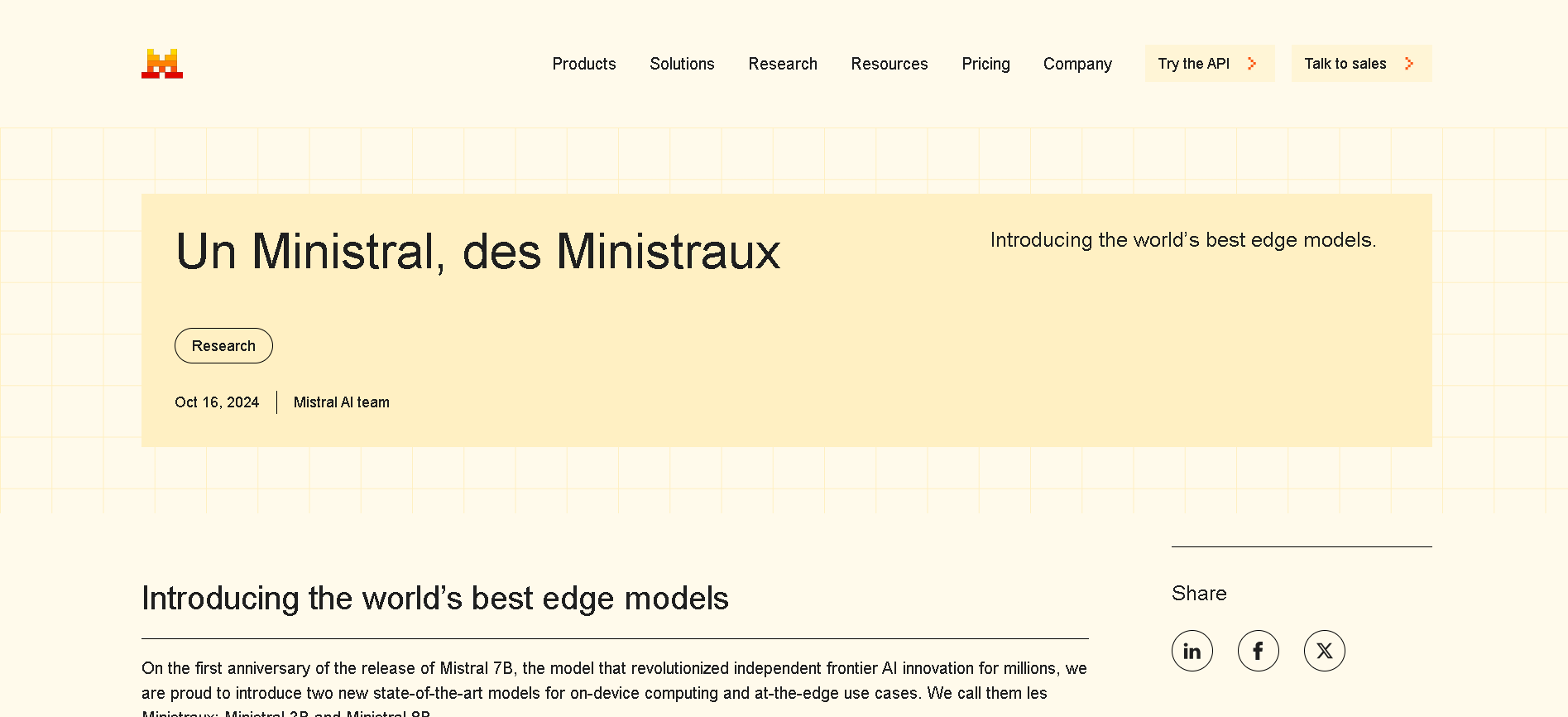
Mistral Ministral ..
Ministral 8B (Ministral‑8B‑Instruct‑2410) is a state-of-the-art, 8‑billion-parameter dense transformer from Mistral AI’s “Ministraux” line, launched October 2024. With a 128 K-token context window (currently 32 K supported in vLLM), interleaved sliding-window attention, and function-calling support, it excels in reasoning, multilingual performance, code, and math tasks—outpacing many models in its size class.

Mistral Ministral ..
Ministral 8B (Ministral‑8B‑Instruct‑2410) is a state-of-the-art, 8‑billion-parameter dense transformer from Mistral AI’s “Ministraux” line, launched October 2024. With a 128 K-token context window (currently 32 K supported in vLLM), interleaved sliding-window attention, and function-calling support, it excels in reasoning, multilingual performance, code, and math tasks—outpacing many models in its size class.

Mistral Ministral ..
Ministral 8B (Ministral‑8B‑Instruct‑2410) is a state-of-the-art, 8‑billion-parameter dense transformer from Mistral AI’s “Ministraux” line, launched October 2024. With a 128 K-token context window (currently 32 K supported in vLLM), interleaved sliding-window attention, and function-calling support, it excels in reasoning, multilingual performance, code, and math tasks—outpacing many models in its size class.
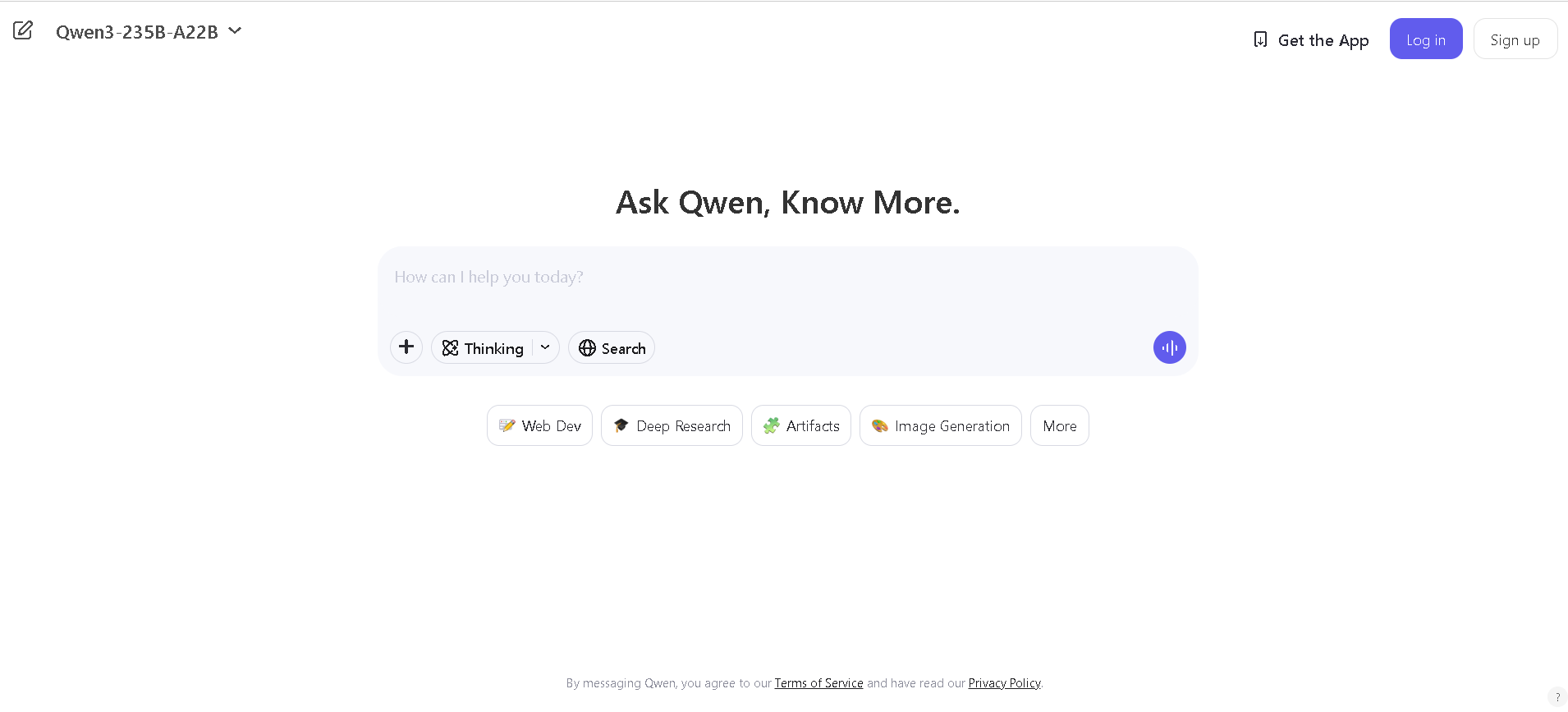
Qwen Chat
Qwen Chat is Alibaba Cloud’s conversational AI assistant built on the Qwen series (e.g., Qwen‑7B‑Chat, Qwen1.5‑7B‑Chat, Qwen‑VL, Qwen‑Audio, and Qwen2.5‑Omni). It supports text, vision, audio, and video understanding, plus image and document processing, web search integration, and image generation—all through a unified chat interface.

Qwen Chat
Qwen Chat is Alibaba Cloud’s conversational AI assistant built on the Qwen series (e.g., Qwen‑7B‑Chat, Qwen1.5‑7B‑Chat, Qwen‑VL, Qwen‑Audio, and Qwen2.5‑Omni). It supports text, vision, audio, and video understanding, plus image and document processing, web search integration, and image generation—all through a unified chat interface.

Qwen Chat
Qwen Chat is Alibaba Cloud’s conversational AI assistant built on the Qwen series (e.g., Qwen‑7B‑Chat, Qwen1.5‑7B‑Chat, Qwen‑VL, Qwen‑Audio, and Qwen2.5‑Omni). It supports text, vision, audio, and video understanding, plus image and document processing, web search integration, and image generation—all through a unified chat interface.
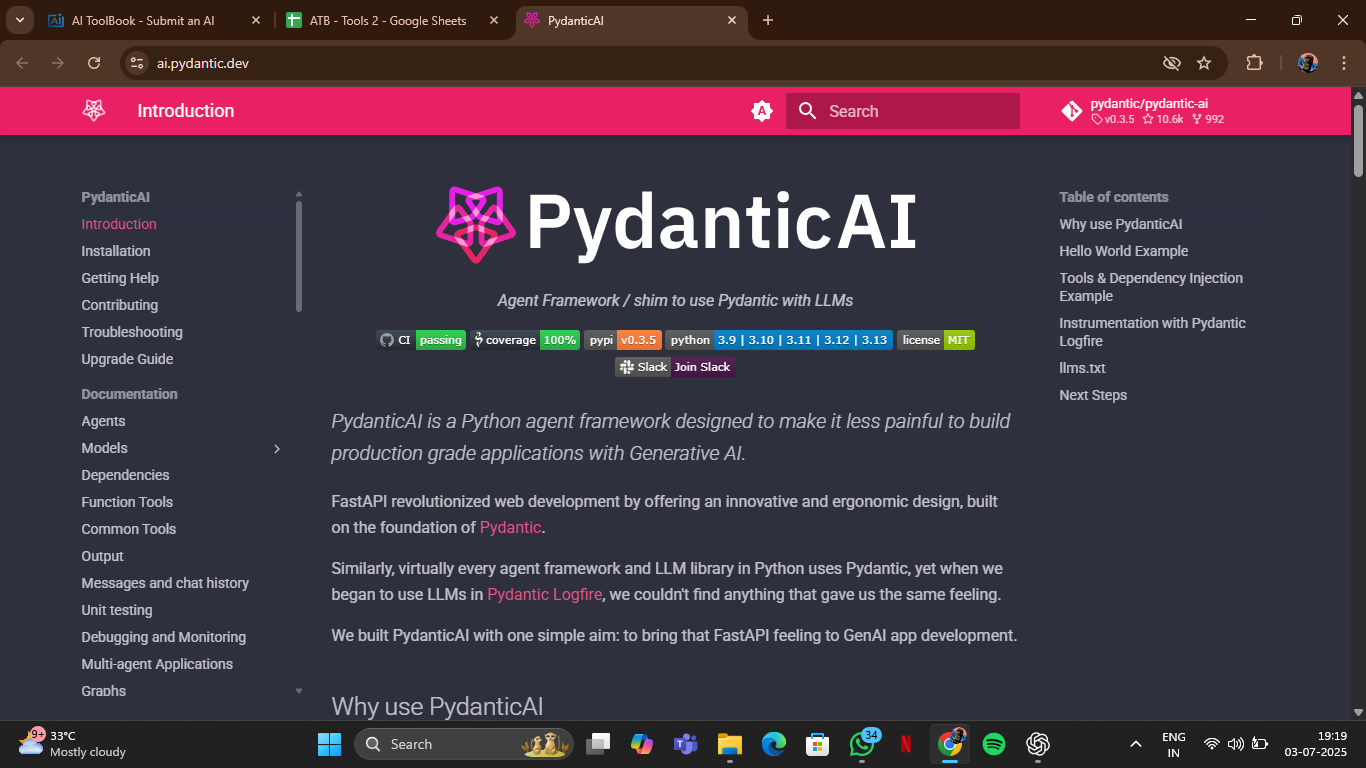

Pydantic AI
Pydantic AI is a powerful tool that bridges natural language and structured data modeling. Developed by the creators of the Pydantic library, this AI tool helps developers generate accurate, production-ready Pydantic models simply by describing them in plain English. Whether you need a schema for an API, a database model, or any structured data format, Pydantic AI uses advanced language models to understand your intent and instantly generate Python code that complies with strict typing, validation, and data serialization standards. This tool is perfect for accelerating backend development, reducing boilerplate, and ensuring that data structures are both precise and reliable—without having to write every model by hand. Built directly into the Python development workflow, Pydantic AI is a must-have for developers working with data-heavy applications.


Pydantic AI
Pydantic AI is a powerful tool that bridges natural language and structured data modeling. Developed by the creators of the Pydantic library, this AI tool helps developers generate accurate, production-ready Pydantic models simply by describing them in plain English. Whether you need a schema for an API, a database model, or any structured data format, Pydantic AI uses advanced language models to understand your intent and instantly generate Python code that complies with strict typing, validation, and data serialization standards. This tool is perfect for accelerating backend development, reducing boilerplate, and ensuring that data structures are both precise and reliable—without having to write every model by hand. Built directly into the Python development workflow, Pydantic AI is a must-have for developers working with data-heavy applications.


Pydantic AI
Pydantic AI is a powerful tool that bridges natural language and structured data modeling. Developed by the creators of the Pydantic library, this AI tool helps developers generate accurate, production-ready Pydantic models simply by describing them in plain English. Whether you need a schema for an API, a database model, or any structured data format, Pydantic AI uses advanced language models to understand your intent and instantly generate Python code that complies with strict typing, validation, and data serialization standards. This tool is perfect for accelerating backend development, reducing boilerplate, and ensuring that data structures are both precise and reliable—without having to write every model by hand. Built directly into the Python development workflow, Pydantic AI is a must-have for developers working with data-heavy applications.
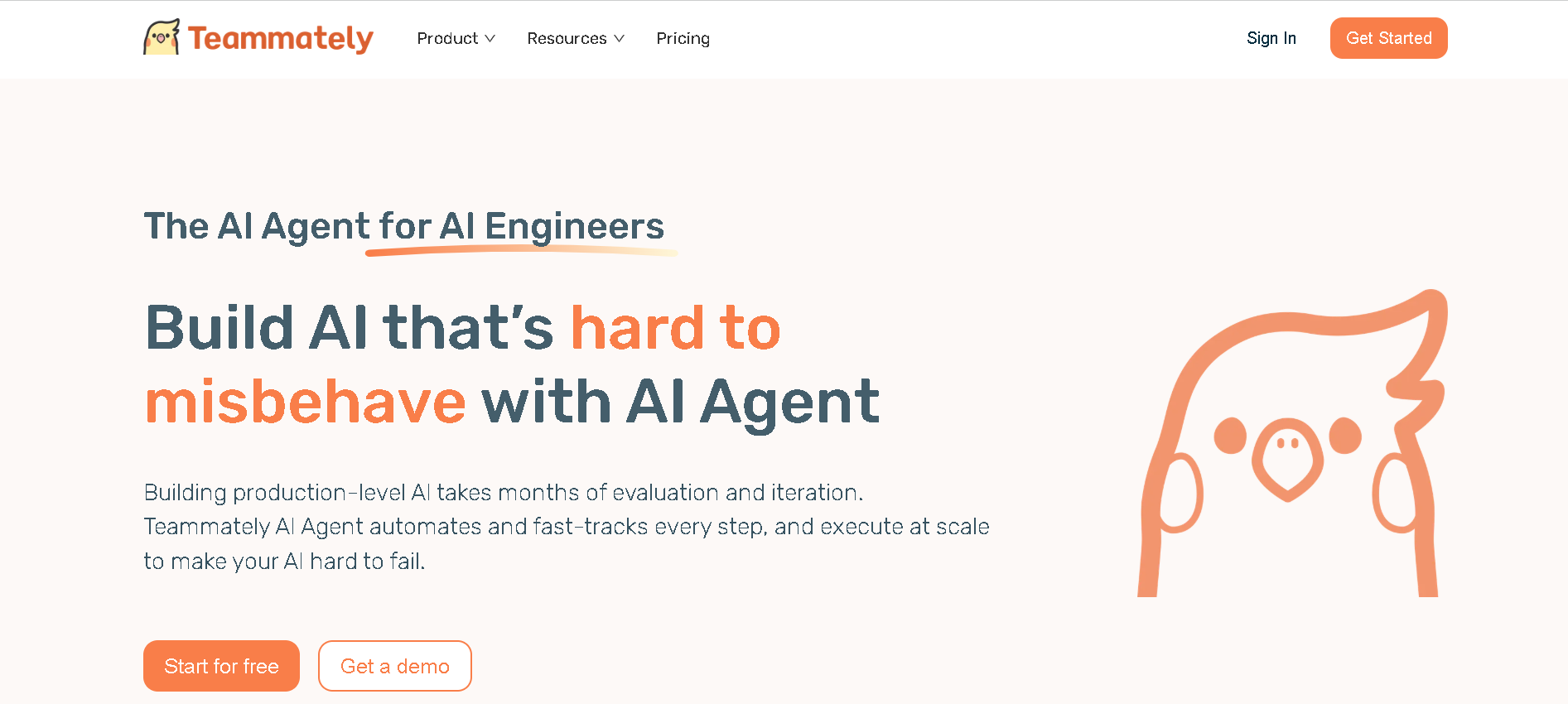

Teammately
Teammately.ai is an AI agent specifically designed for AI engineers to streamline and accelerate the development of robust, production-level AI applications. Its primary purpose is to automate various critical stages of the AI development lifecycle, from prompt generation and self-refinement to comprehensive evaluation, efficient RAG (Retrieval Augmented Generation) building, and interpretable observability, ensuring AI solutions are robust and less prone to failure.


Teammately
Teammately.ai is an AI agent specifically designed for AI engineers to streamline and accelerate the development of robust, production-level AI applications. Its primary purpose is to automate various critical stages of the AI development lifecycle, from prompt generation and self-refinement to comprehensive evaluation, efficient RAG (Retrieval Augmented Generation) building, and interpretable observability, ensuring AI solutions are robust and less prone to failure.


Teammately
Teammately.ai is an AI agent specifically designed for AI engineers to streamline and accelerate the development of robust, production-level AI applications. Its primary purpose is to automate various critical stages of the AI development lifecycle, from prompt generation and self-refinement to comprehensive evaluation, efficient RAG (Retrieval Augmented Generation) building, and interpretable observability, ensuring AI solutions are robust and less prone to failure.
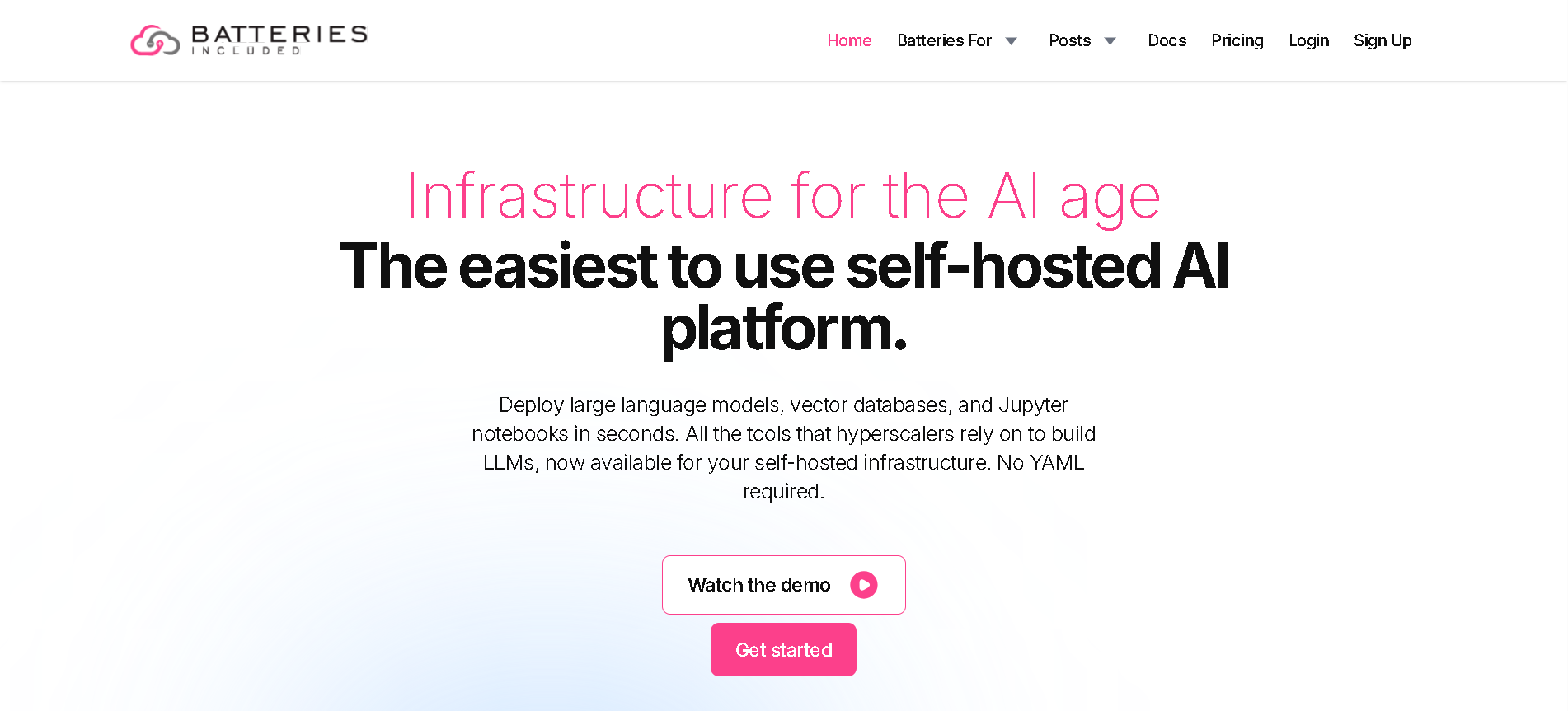
Batteries Included
Batteries Included is a self-hosted AI platform designed to provide the necessary infrastructure for building and deploying AI applications. Its primary purpose is to simplify the deployment of large language models (LLMs), vector databases, and Jupyter notebooks, offering enterprise-grade tools similar to those used by hyperscalers, but within a user's self-hosted environment.

Batteries Included
Batteries Included is a self-hosted AI platform designed to provide the necessary infrastructure for building and deploying AI applications. Its primary purpose is to simplify the deployment of large language models (LLMs), vector databases, and Jupyter notebooks, offering enterprise-grade tools similar to those used by hyperscalers, but within a user's self-hosted environment.

Batteries Included
Batteries Included is a self-hosted AI platform designed to provide the necessary infrastructure for building and deploying AI applications. Its primary purpose is to simplify the deployment of large language models (LLMs), vector databases, and Jupyter notebooks, offering enterprise-grade tools similar to those used by hyperscalers, but within a user's self-hosted environment.


WebDev Arena
LMArena is an open, crowdsourced platform for evaluating large language models (LLMs) based on human preferences. Rather than relying purely on automated benchmarks, it presents paired responses from different models to users, who vote for which is better. These votes build live leaderboards, revealing which models perform best in real-use scenarios. Key features include prompt-to-leaderboard comparison, transparent evaluation methods, style control for how responses are formatted, and auditability of feedback data. The platform is particularly valuable for researchers, developers, and AI labs that want to understand how their models compare when judged by real people, not just metrics.


WebDev Arena
LMArena is an open, crowdsourced platform for evaluating large language models (LLMs) based on human preferences. Rather than relying purely on automated benchmarks, it presents paired responses from different models to users, who vote for which is better. These votes build live leaderboards, revealing which models perform best in real-use scenarios. Key features include prompt-to-leaderboard comparison, transparent evaluation methods, style control for how responses are formatted, and auditability of feedback data. The platform is particularly valuable for researchers, developers, and AI labs that want to understand how their models compare when judged by real people, not just metrics.


WebDev Arena
LMArena is an open, crowdsourced platform for evaluating large language models (LLMs) based on human preferences. Rather than relying purely on automated benchmarks, it presents paired responses from different models to users, who vote for which is better. These votes build live leaderboards, revealing which models perform best in real-use scenarios. Key features include prompt-to-leaderboard comparison, transparent evaluation methods, style control for how responses are formatted, and auditability of feedback data. The platform is particularly valuable for researchers, developers, and AI labs that want to understand how their models compare when judged by real people, not just metrics.
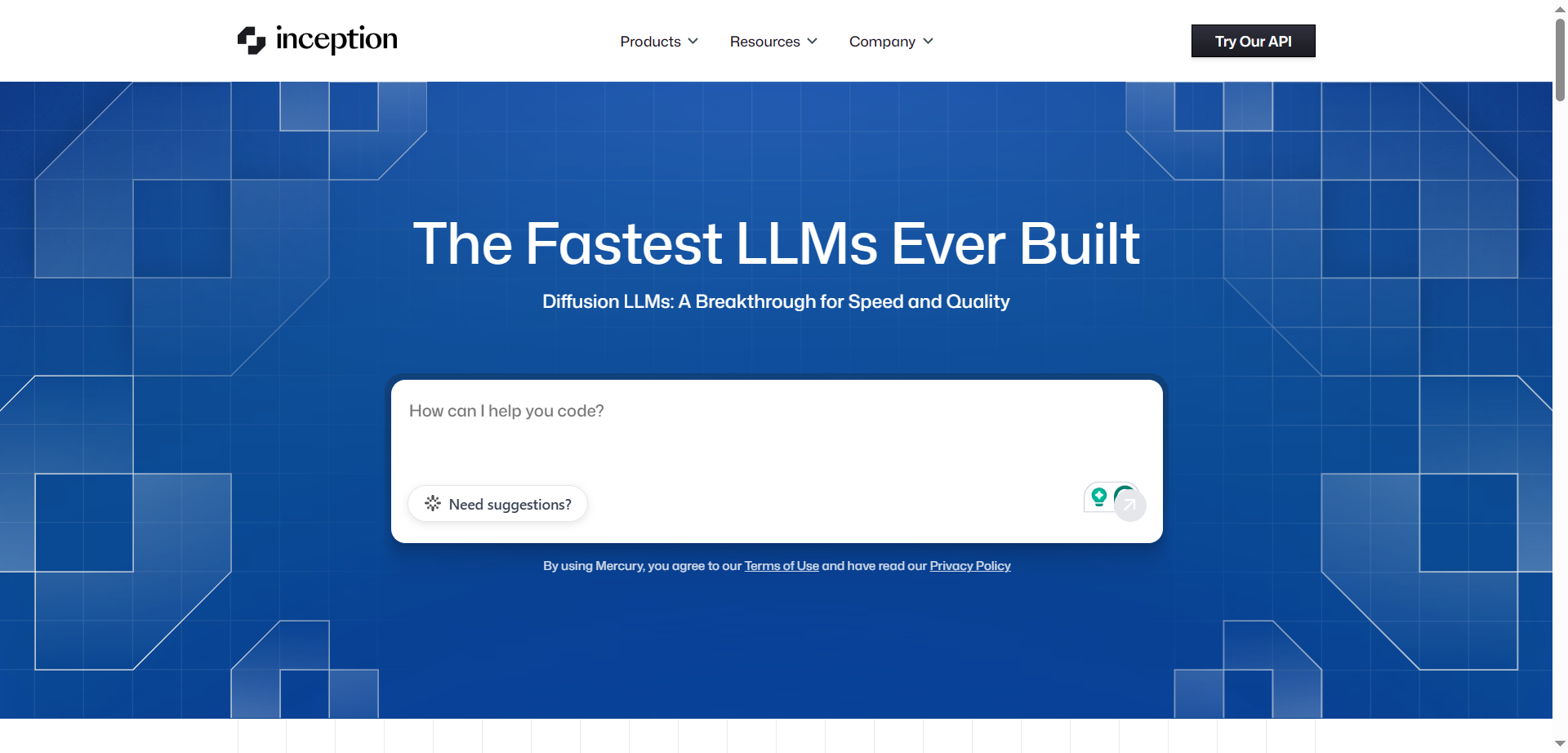

inception
Inception Labs is an AI research company that develops Mercury, the world's first commercial diffusion-based large language models. Unlike traditional autoregressive LLMs that generate tokens sequentially, Mercury models use diffusion architecture to generate text through parallel refinement passes. This breakthrough approach enables ultra-fast inference speeds of over 1,000 tokens per second while maintaining frontier-level quality. The platform offers Mercury for general-purpose tasks and Mercury Coder for development workflows, both featuring streaming capabilities, tool use, structured output, and 128K context windows. These models serve as drop-in replacements for traditional LLMs through OpenAI-compatible APIs and are available across major cloud providers including AWS Bedrock, Azure Foundry, and various AI platforms for enterprise deployment.


inception
Inception Labs is an AI research company that develops Mercury, the world's first commercial diffusion-based large language models. Unlike traditional autoregressive LLMs that generate tokens sequentially, Mercury models use diffusion architecture to generate text through parallel refinement passes. This breakthrough approach enables ultra-fast inference speeds of over 1,000 tokens per second while maintaining frontier-level quality. The platform offers Mercury for general-purpose tasks and Mercury Coder for development workflows, both featuring streaming capabilities, tool use, structured output, and 128K context windows. These models serve as drop-in replacements for traditional LLMs through OpenAI-compatible APIs and are available across major cloud providers including AWS Bedrock, Azure Foundry, and various AI platforms for enterprise deployment.


inception
Inception Labs is an AI research company that develops Mercury, the world's first commercial diffusion-based large language models. Unlike traditional autoregressive LLMs that generate tokens sequentially, Mercury models use diffusion architecture to generate text through parallel refinement passes. This breakthrough approach enables ultra-fast inference speeds of over 1,000 tokens per second while maintaining frontier-level quality. The platform offers Mercury for general-purpose tasks and Mercury Coder for development workflows, both featuring streaming capabilities, tool use, structured output, and 128K context windows. These models serve as drop-in replacements for traditional LLMs through OpenAI-compatible APIs and are available across major cloud providers including AWS Bedrock, Azure Foundry, and various AI platforms for enterprise deployment.
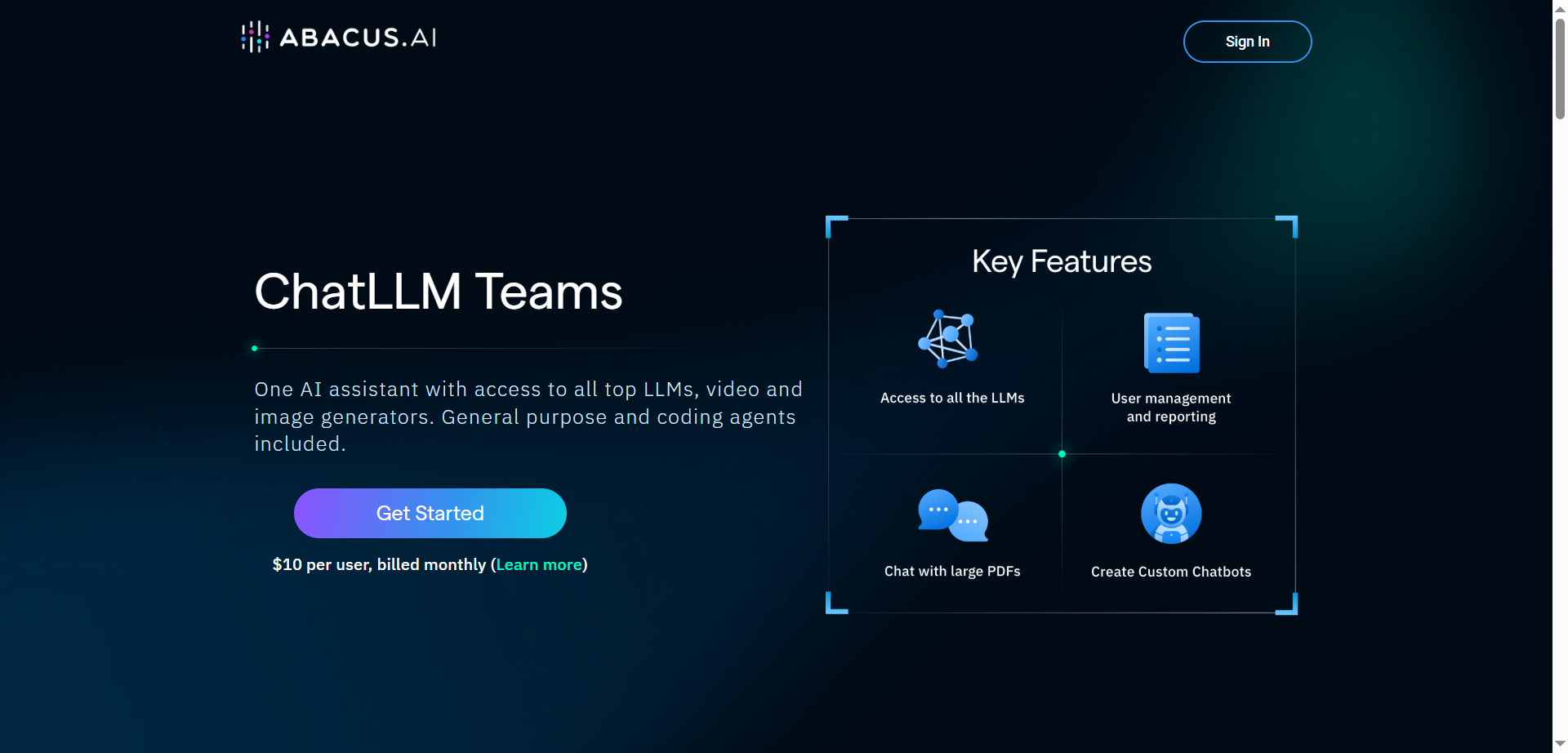
Abacus.AI
ChatLLM Teams by Abacus.AI is an all‑in‑one AI assistant that unifies access to top LLMs, image and video generators, and powerful agentic tools in a single workspace. It includes DeepAgent for complex, multi‑step tasks, code execution with an editor, document/chat with files, web search, TTS, and slide/doc generation. Users can build custom chatbots, set up AI workflows, generate images and videos from multiple models, and organize work with projects across desktop and mobile apps. The platform is OpenAI‑style in usability but adds operator features for running tasks on a computer, plus DeepAgent Desktop and AppLLM for building and hosting small apps.

Abacus.AI
ChatLLM Teams by Abacus.AI is an all‑in‑one AI assistant that unifies access to top LLMs, image and video generators, and powerful agentic tools in a single workspace. It includes DeepAgent for complex, multi‑step tasks, code execution with an editor, document/chat with files, web search, TTS, and slide/doc generation. Users can build custom chatbots, set up AI workflows, generate images and videos from multiple models, and organize work with projects across desktop and mobile apps. The platform is OpenAI‑style in usability but adds operator features for running tasks on a computer, plus DeepAgent Desktop and AppLLM for building and hosting small apps.

Abacus.AI
ChatLLM Teams by Abacus.AI is an all‑in‑one AI assistant that unifies access to top LLMs, image and video generators, and powerful agentic tools in a single workspace. It includes DeepAgent for complex, multi‑step tasks, code execution with an editor, document/chat with files, web search, TTS, and slide/doc generation. Users can build custom chatbots, set up AI workflows, generate images and videos from multiple models, and organize work with projects across desktop and mobile apps. The platform is OpenAI‑style in usability but adds operator features for running tasks on a computer, plus DeepAgent Desktop and AppLLM for building and hosting small apps.
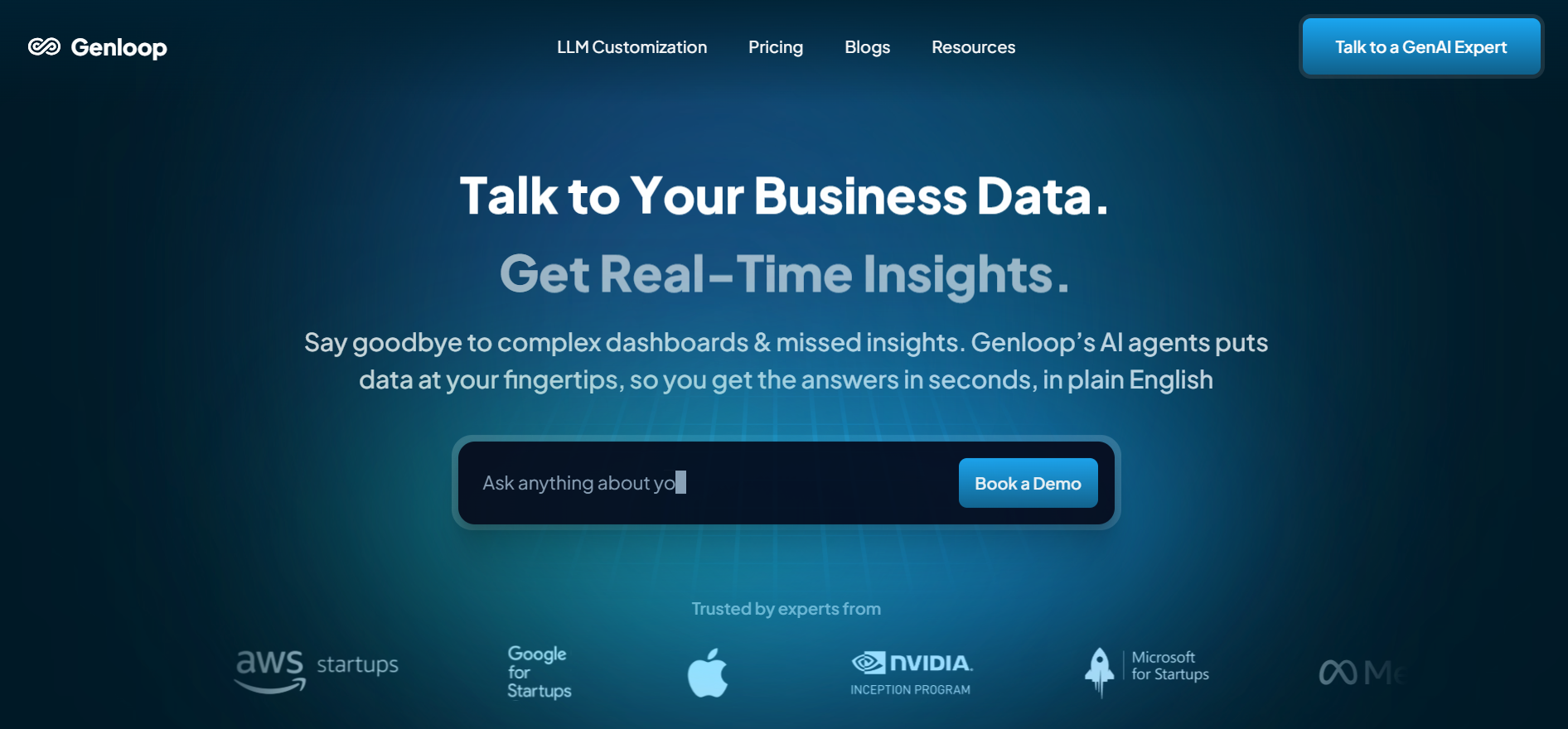

Genloop AI
Genloop is a platform that empowers enterprises to build, deploy, and manage custom, private large language models (LLMs) tailored to their business data and requirements — all with minimal development effort. It turns enterprise data into intelligent, conversational insights, allowing users to ask business questions in natural language and receive actionable analysis instantly. The platform enables organizations to confidently manage their data-driven decision-making by offering advanced fine-tuning, automation, and deployment tools. Businesses can transform their existing datasets into private AI assistants that deliver accurate insights, while maintaining complete security and compliance. Genloop’s focus is on bridging the gap between AI and enterprise data operations, providing a scalable, trustworthy, and adaptive solution for teams that want to leverage AI without extensive coding or infrastructure complexity.


Genloop AI
Genloop is a platform that empowers enterprises to build, deploy, and manage custom, private large language models (LLMs) tailored to their business data and requirements — all with minimal development effort. It turns enterprise data into intelligent, conversational insights, allowing users to ask business questions in natural language and receive actionable analysis instantly. The platform enables organizations to confidently manage their data-driven decision-making by offering advanced fine-tuning, automation, and deployment tools. Businesses can transform their existing datasets into private AI assistants that deliver accurate insights, while maintaining complete security and compliance. Genloop’s focus is on bridging the gap between AI and enterprise data operations, providing a scalable, trustworthy, and adaptive solution for teams that want to leverage AI without extensive coding or infrastructure complexity.


Genloop AI
Genloop is a platform that empowers enterprises to build, deploy, and manage custom, private large language models (LLMs) tailored to their business data and requirements — all with minimal development effort. It turns enterprise data into intelligent, conversational insights, allowing users to ask business questions in natural language and receive actionable analysis instantly. The platform enables organizations to confidently manage their data-driven decision-making by offering advanced fine-tuning, automation, and deployment tools. Businesses can transform their existing datasets into private AI assistants that deliver accurate insights, while maintaining complete security and compliance. Genloop’s focus is on bridging the gap between AI and enterprise data operations, providing a scalable, trustworthy, and adaptive solution for teams that want to leverage AI without extensive coding or infrastructure complexity.
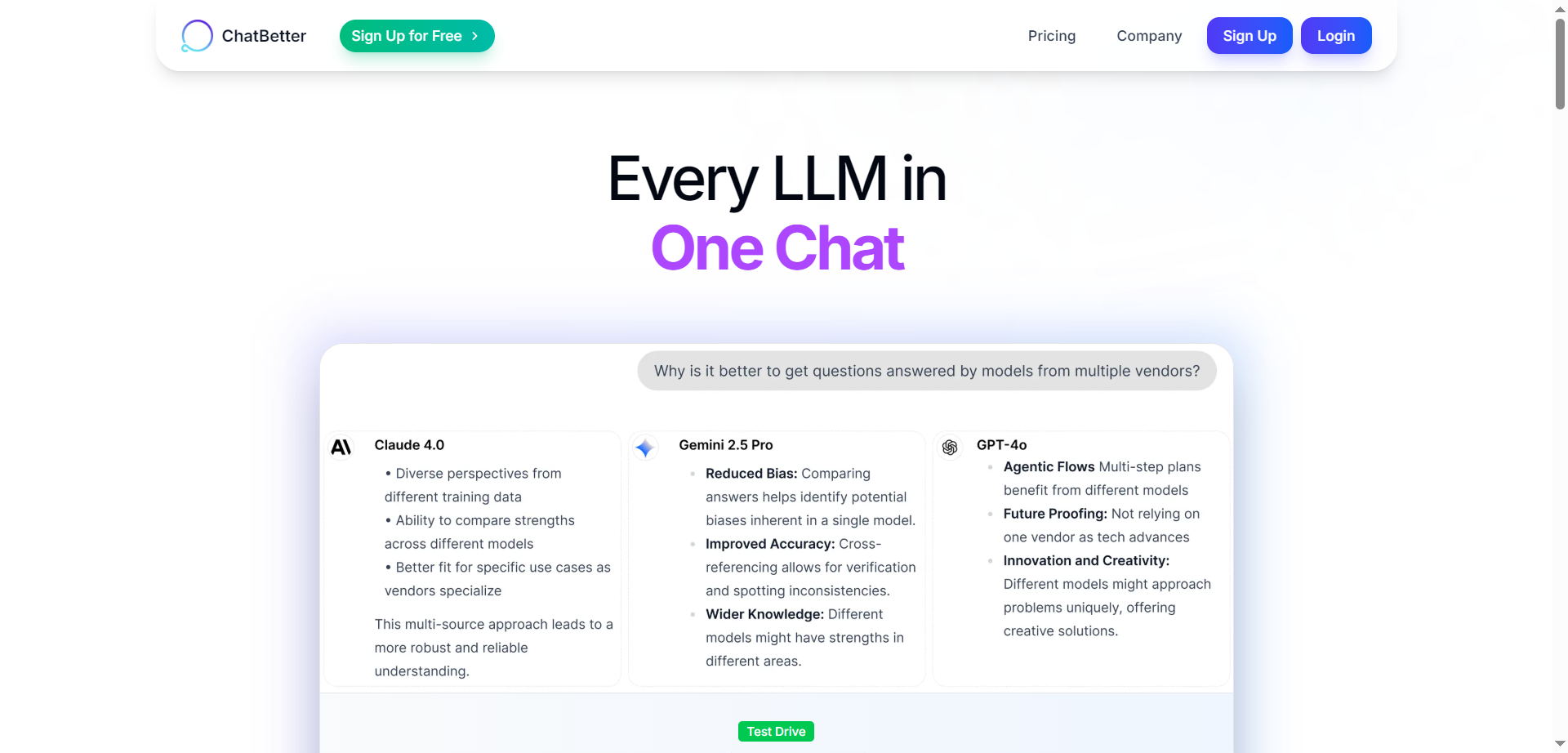
ChatBetter
ChatBetter is an AI platform designed to unify access to all major large language models (LLMs) within a single chat interface. Built for productivity and accuracy, ChatBetter leverages automatic model selection to route every query to the most capable AI—eliminating guesswork about which model to use. Users can directly compare responses from OpenAI, Anthropic, Google, Meta, DeepSeek, Perplexity, Mistral, xAI, and Cohere models side by side, or merge answers for comprehensive insights. The system is crafted for teams and individuals alike, enabling complex research, planning, and writing tasks to be accomplished efficiently in one place.

ChatBetter
ChatBetter is an AI platform designed to unify access to all major large language models (LLMs) within a single chat interface. Built for productivity and accuracy, ChatBetter leverages automatic model selection to route every query to the most capable AI—eliminating guesswork about which model to use. Users can directly compare responses from OpenAI, Anthropic, Google, Meta, DeepSeek, Perplexity, Mistral, xAI, and Cohere models side by side, or merge answers for comprehensive insights. The system is crafted for teams and individuals alike, enabling complex research, planning, and writing tasks to be accomplished efficiently in one place.

ChatBetter
ChatBetter is an AI platform designed to unify access to all major large language models (LLMs) within a single chat interface. Built for productivity and accuracy, ChatBetter leverages automatic model selection to route every query to the most capable AI—eliminating guesswork about which model to use. Users can directly compare responses from OpenAI, Anthropic, Google, Meta, DeepSeek, Perplexity, Mistral, xAI, and Cohere models side by side, or merge answers for comprehensive insights. The system is crafted for teams and individuals alike, enabling complex research, planning, and writing tasks to be accomplished efficiently in one place.
Editorial Note
This page was researched and written by the ATB Editorial Team. Our team researches each AI tool by reviewing its official website, testing features, exploring real use cases, and considering user feedback. Every page is fact-checked and regularly updated to ensure the information stays accurate, neutral, and useful for our readers.
If you have any suggestions or questions, email us at hello@aitoolbook.ai